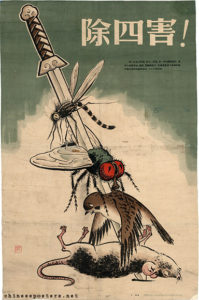
Is it possible that traditional conservation science is a pathological disorder driven by an obsessive, distorted belief that the environment can be, indeed must be, restored to some idyllic, imaginary state of being at any cost – including, and perhaps preferring, the killing of anything that gets in the way?
Sound over the top?

Marc Bekhoff, Professor Emeritus of Ecology and Evolutionary Biology at the University of Colorado, describes the exuberant conversion of a squeamish New Zealander woman into someone who finds herself “weirdly addicted” to the thrill of killing animals. She had become caught up in New Zealand’s plan to exterminate five non-native mammals by the year 2050 through a process of normalizing the killing of targeted populations called gamification. The five targeted populations are the brushtail possum, stoat, and three rats species.
A dispassionate observer might consider this woman’s thrill to kill as an isolated case of a mental disorder. But this behavior has become widespread in New Zealand. This is evidenced by “a group of grannies” in this woman’s neighborhood who compete to see who can kill the most targeted number of animals in their gardens. For these genteel ladies, killing has become a game.

What’s happening in New Zealand is reminiscent of the Four Pests Campaign of China’s Cultural Revolution under Mao Zedong. In 1958, the Chinese government targeted four “pests” (mosquitos, flies, sparrows and rats) for extinction in an effort to eradicate disease. The public health program was implemented by everyone, from troupes of children to the elderly, with merciless efficiency.
Unfortunately, the sparrow’s role in maintaining ecological balance was quickly and painfully realized. After killing an estimated one billion sparrows, China’s crops were inundated by locusts left free to reproduce unhampered by hungry sparrows. The nationwide loss of crops contributed to the starvation of 20 to 30 million people from 1958 to 1962.

Gamification is widely practiced throughout the United States, often under a false pretense of conservation. Wildlife departments create live shooting galleries by permitting hunters to kill animals such as wolves, bears and coyotes, defining them as “pests.” This gamification ensures there are enough elk, caribou and deer for big game hunters to later kill for entertainment. To be successful, gamification requires normalizing killing among children, convincing them it is a natural, masculine, and even respectful activity. It is time that our society ask what this violent sport teaches our youth, alongside competition encouraging kids to kill animals like squirrels.
In New Zealand, the gamification of five species is official national policy. This policy is meant to normalize the killing of targeted populations by turning the killing into a “weirdly addictive” game.

By sponsoring a pathological and weirdly addictive game of violence, New Zealand may inadvertently normalize violence against other humans as well. After all, New Zealand has the highest rate of family violence in the developed world, and there is well-established link between violence against animals and domestic violence.
Traditional conservation, or the gamification of other species, is even reminiscent of Shirley Jackson’s 1948 short story, The Lottery. The story hauntingly depicts a seemingly normal community – except every year the town selects a resident by lottery to be stoned to death.
Jackson elegantly explains how pathological traditions survive year after year. They survive by normalizing pathological behaviors and intimidating anyone who dares to talk “of giving up the lottery”. Challengers of tradition are branded “crazy fools” and warned that “nothing but trouble” comes from questioning tradition.
The tradition of the Lottery is symbolized in Jackson’s story by a “black box” that “grew shabbier each year” – which serves as an apt analogy of how our justifications for killing, culling and eradication of entire species grows weaker and weaker each year.
Today, traditional conservation science is being challenged by a paradigm of compassionate conservation. This new science approach is a practical and attainable alternative to hunting, game-keeping and predator conservation strategies practiced around the globe. Compassionate conservation does not aim to restore the world to a subjective pristine state, but develops strategies to care for the world we inherited.
Many so-called invasive species can benefit their non-native environments, including feral water buffalo in Australia, sambar in Florida, wild horses throughout the American West, and the world’s only population of wild dromedary camel which is thriving in Australia but has been extinct in their native Middle East and Africa for 3,000 years. These invasive species consume plant matter indigestible to smaller native herbivores, which may reduce fire frequency, accelerate nutrient cycling, and shape plant communities.
Conservationists should see animals as individuals, reduce harm, value all life, and work for a world of peaceful coexistence. It is time to end pathological killing and embrace compassion instead.
Ed Boks is the former executive director of the New York City and Los Angeles Animal Care & Control Departments whose work has been published in the LA Times, Newsweek, and Real Clear Policy. Boks currently works as an independent consultant, providing proven no-kill solutions to shelters and communities and is a writers fellow for Sentient Media.

